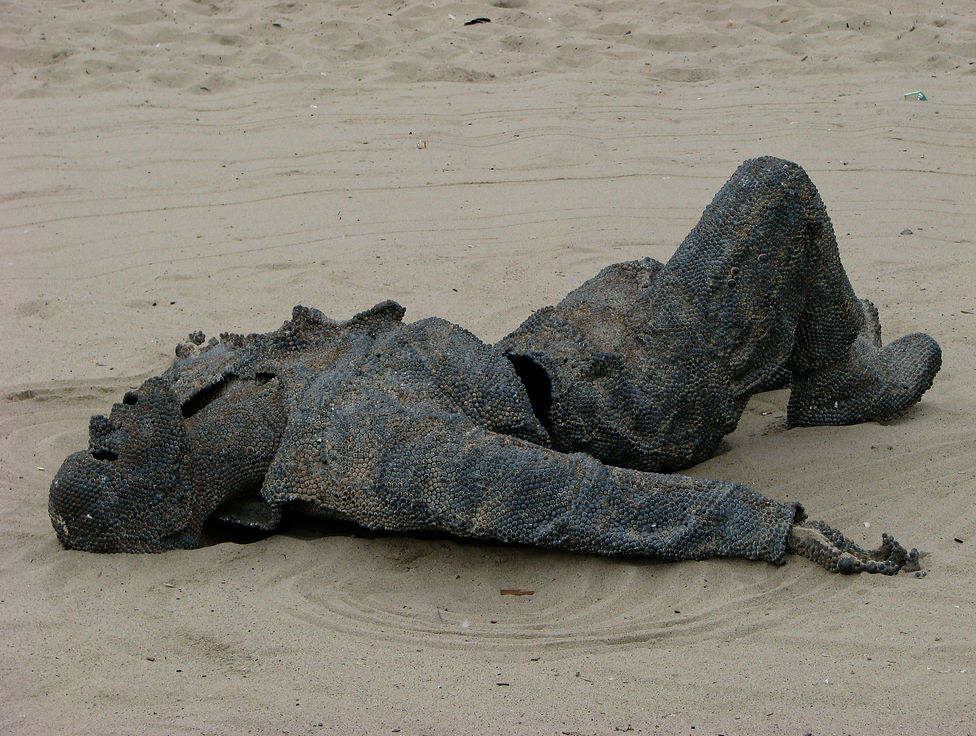MARCUS ERIKSEN
IRAQI ANGEL
On Feb. 24, 1991 a truck filled with a dozen marines in an endless convoy headed to Kuwait City stopped when I yelled, “Hey look a body!” A man lay 30 feet from the incinerated jeep he was thrown from. His knees were bent, eyes and mouth open, and his torso severed. We were both covered with specks of oil from the oil rig fires nearby, and soaked by the rains that made me dirty and miserable, yet washed his face clean. Before he died he waved his arms, like the way kids make snow angels. He made wings in the sand.

I never forgot that first dead soldier, or the grimaced faces of the living ones missing arms and legs, or the piles of dead men at the Highway of Death. Years ago I began sculpting him, beginning with an old uniform, fiberglass resin, plaster and 70,000 steel ball bearings welded together. In a desert war sand, flesh and steel move in varied directions and velocities. We ingest sand, live in sand trenches, travel in steel vehicles, and project steel through flesh to kill each other.






